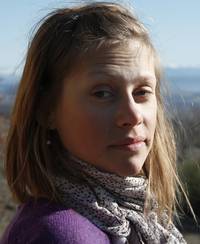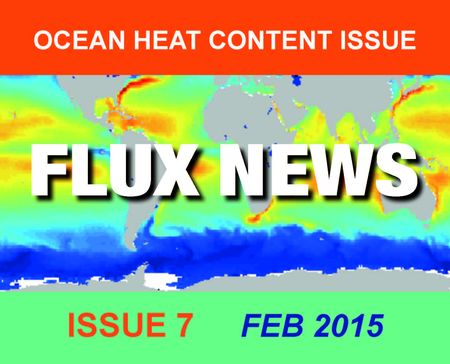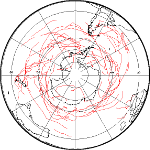|
Tilinina Natalia
research scientist |  |
| Mikhail Krinitskiy, Kirill Grashchenkov, Natalia Tilinina, Sergey Gulev Tracking of atmospheric phenomena with artificial neural networks: A supervised approach Procedia Computer Science, Vol. 186, 2021, p.p. 403-410, doi:10.1016/j.procs.2021.04.209 Мысленков С.А., Маркина М.Ю., Архипкин В.С., Тилинина Н.Д. Повторяемость штормового волнения в Баренцевом море в условиях современного климата Вестник Московского Университета. Серия 5. География. Groisman, P., O. Bulygina, G. Henebry , N. Speranskaya, A. Shiklomanov, Y. Chen , N. Tchebakova, E. Parfenova, N. Tilinina, O. Zolina, A. Dufour, J. Chen, R. John, P. Fan , C. Mátyás, I. Yesserkepova and I. Kaipov Dryland belt of Northern Eurasia: contemporary environmental changes and their consequences Environ. Res. Lett. 13 (2018) 115008, https://doi.org/10.1088/1748-9326/aae43c Krinitskiy, M., P. Verezemskaya, K. Grashchenkov, N. Tilinina, S. Gulev, M. Lazzara Deep Convolutional Neural Networks Capabilities for Binary Classification of Polar Mesocyclones in Satellite Mosaics Atmosphere 2018, 9(11), 426; https://doi.org/10.3390/atmos9110426 Tilinina, N., A. Gavrikov, and S. Gulev Association of the North Atlantic surface turbulent heat fluxes with midlatitude cyclones Mon. Wea. Rev., 146, 3691–3715, https://doi.org/10.1175/MWR-D-17-0291.1 Verezemskaya, P., N. Tilinina, S. Gulev, I. A. Renfrew, M. Lazzara Southern Ocean mesocyclones and polar lows from manually tracked satellite mosaics. Gephys. Res. Lett., 2017, 44, doi:10.1002/2017GL074053. Volosciuk, C., D. Maraun, V. Semenov, N. Tilinina, S.K. Gulev, and M. Latif Rising Mediterranean Sea Surface Temperatures Amplify Extreme Summer Precipitation in Central Europe Nature Sci. Rep. 6, 32450; doi: 10.1038/srep32450 Semmler, T., L. Stulic, T. Jung, N. Tilinina, C. Campos, S. Gulev, and D. Koracin Seasonal Atmospheric Responses to Reduced Arctic Sea Ice in an Ensemble of Coupled Model Simulations J. Climate, 29, 5893-5913, DOI: 10.1175/JCLI-D-15-0586.1 Kravtsov, S., N. Tilinina, Y. Zyulyaeva, and S. Gulev Empirical modeling and stochastic simulation of sea-level pressure variability. J. Appl. Meteor. Climatol., 55, 1197-1219, DOI: 10.1175/JAMC-D-15-0186.1 Irina Rudeva, Sergey K. Gulev, Ian Simmonds and Natalia Tilinina The sensitivity of characteristics of cyclone activity to identification procedures in tracking algorithms Tellus A 2014, 66, 24961, http://dx.doi.org/10.3402/tellusa.v66.24961 S. A. Josey, L. Yu, S. Gulev, X. Jin, N. Tilinina, B. Barnier, and L. Brodeau Unexpected impacts of the Tropical Pacific array on reanalysis surface meteorology and heat fluxes Geophys. Res. Lett., 41, 6213–6220, doi:10.1002/2014GL061302, 2014 Natalia Tilinina, Sergey K. Gulev, and David H. Bromwich New view of Arctic cyclone activity from the Arctic system reanalysis Geophysical Research Letters Tilinina, N., S.K. Gulev, I.Rudeva, and K.P.Koltermann Comparing cyclone life cycle characteristics and their interannual variability in different reanalyses. J. Climate, 26, 2013, DOI: 10.1175/JCLI-D-12-00777.1 Neu, U., M. G. Akperov, N. Bellenbaum, R. Benestad, R. Blender, R. Caballero, A. Cocozza, H. F. Dacre, Y. Feng, K. Fraedrich, J. Grieger, S. Gulev, J. Hanley, T. Hewson, M. Inatsu, K. Keay, S. F. Kew, I. Kindem, G. C. Leckebusch, M. L. R. Liberato, P. Lionello, I. I. Mokhov, J. G. Pinto, C. C. Raible, M. Reale, I. Rudeva, M. Schuster, I. Simmonds, M. Sinclair, M. Sprenger, N. D. Tilinina, I. F. Trigo, S. Ulbrich, U. Ulbrich, X. L. Wang, H. Wernli IMILAST – a community effort to intercompare extratropical cyclone detection and tracking algorithms: assessing method-related uncertainties. Bull. Am. Meteor. Soc., 93, 529-547, 2013, doi: http://dx.doi.org/10.1175/BAMS-D-11-00154.1 Ulbrich. U., G. C. Leckebusch, J. Grieger, M. Schuster, M. Akperov, M. Yu. Bardin, Y. Feng, S. Gulev, M. Inatsu, K. Keay, S. F. Kew, M. L. R. Liberato, P. Lionello, I. I. Mokhov, U. Neu, J. G. Pinto, C. C. Raible, M. Reale, I. Rudeva, I. Simmonds, N. D. Tilinina, I. F. Trigo, S. Ulbrich, X. L. Wang, H. Wernli Are Greenhouse Gas Signals of Northern Hemisphere winter extra-tropical cyclone activity dependent on the identification and tracking algorithm? Meteorologische Zeitschrift, Vol. 22, No. 1, 61–68, 2013 |
|
|


 Атлас
Атлас Southern Hemisphere
Southern Hemisphere

